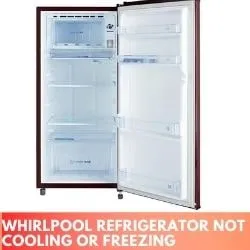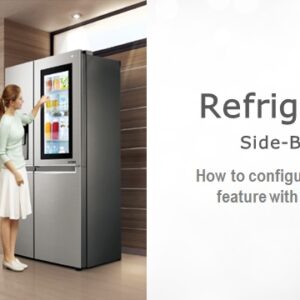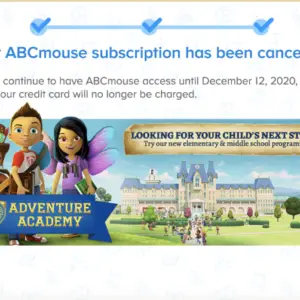
If you are searching for this now it means your Whirlpool Fridge is not cooling, you may have had the same challenge before now and have solved it or this may be the first time you are having such a problem. Whichever it is, your fridge has just a minor issue that will not take you much time to do it yourself and have your fridge in perfect condition. Knowing what to look for and how to fix it at home quickly can save you a lot of time and money.
Among the common causes of your Whirlpool fridge/freezer not cooling is debris on the condenser coils. However, faulty fans, blocked vents, and even a full fridge can impair the unit’s performance. Before going ahead to bringing out your tools box and losing some screws to test internal parts for problems, inspect and clean the coils.
In this blog entry, we will go over some of the likely reasons for cooling problems in your Whirlpool fridge/freezer. We’ll also look at what you can do yourself before calling a repairman.
Leave a comment at the end of this article to tell us how much this has helped you sort out your not-cooling problem and if need be for us to update this article with some tricks you have used to sort out this problem.
Whirlpool Fridge Not Cooling
When this occurs, one piece of advice I will give before you go ahead to check for any other issue is to check whether the fridge is too close to the wall. If it is, you should move it away as that is one reason why Whirlpool may not be cooling.
There may not be enough air in circulation for the freezer and hence the issue of not cooling.
There may be other problems apart from the one mentioned above, check below to see other reasons your Whirlpool Fridge may not be cooling.
- Dirty condenser coils
- Damaged internal fans
- Faulty start relay
There are a few things you can check before looking for a service.
Always disconnect your refrigerator from the power source before performing any checks, and call a technician if you are unsure that you can safely test and repair the parts yourself.
Examine the Condenser Coils
Among different issues that make Whirlpool fridge not to cool, this is one of the prevalent of all. The condenser coils, which are usually located at the back of the unit, are used to dissipate the heat generated as the coolant is pumped into the fridge.
Everyday life, particularly in the kitchen, generates a lot of dust, dirt, and debris.
Even if you sweep and mop the floor, it is not uncommon to find a build-up beneath your refrigerator. As this debris accumulates, it may adhere to the underside of your unit.
They will not function properly if they become clogged with dirt, debris, or dust. Rather than releasing the heat from the fridge, they will retain it, making it more difficult for your unit to cool.
To inspect and clean the condenser coils, follow these steps:
- Unplug the refrigerator carefully and move it away from the wall.
- The coils are located beneath the refrigerator, sometimes behind a plastic guard that can be removed.
- Attach the narrow hose to a vacuum cleaner and run it over the coils and surrounding area, being careful not to damage the cable.
- A dry brush can be used to scrub away any stubborn debris.
- Vacuum once more to ensure that no dirt remains in the area.
Examine the Condenser Fan
To cool the compressor, the condenser fan draws air through the condenser coils.
To keep the fridge cool, the compressor pumps coolant into it.
However, if the condenser fan fails to operate, the compressor will overheat and become ineffective.
To solve this issue, you need to find the fan and ensure that no blockages or debris are impeding its movement while the fridge is removed or disconnected from the power source.
Manually turning the blades should be no problem.
If they become stuck or won’t turn at all, the fan must be replaced.
You should also check the condenser fan motor.
This is more invasive, but it can be checked with a multimeter.
While using your multimeter, you are hoping for continuity.
If the readings are not consistent, the motor must be replaced.
Examine the Evaporator Fan
The evaporator fan pulls air into the fridge and freezer through the cooling coils.
Some units will only have one fan, which will be located in the freezer.
If this fan fails, the cold air will cease to circulate.
You can test this fan by unplugging the unit first.
When you’re certain that nothing will move, try turning it by hand.
If it is stuck or not turning at all, you will need to replace the fan.
If the fan turns on, the motor may have failed.
This can be verified in the same manner as described above.
The side of my Whirlpool refrigerator will not cool, but the freezer will.
If your freezer is running but your fridge is not cooling, your fridge is likely either overfilled or the door seal is loose.
Other problems may include dirty condenser coils or broken fans, which you can check by following the steps outlined above.
An overloaded fridge will prevent cold air from circulating, and the fan will frequently become clogged and unable to function properly.
Similarly, if the door does not close properly, the fridge will struggle to keep cool as air leaks out.
There are two simple ways to check the door seal:
- When the door is closed, slowly move your hand around it.
- If there is a problem with the seal, cold air will escape.
- In this case, the seal must be replaced. Place a piece of paper between the door and the unit to seal it.
- If the seal is intact, you should not be able to pull it free.
- If it comes free with no resistance, however, the seal will need to be replaced.
Your refrigerator should be no more than 34 percent full.
If every shelf is occupied, the air cannot circulate and the food cannot cool.
If your refrigerator is overflowing, you must:
- Remove any used food containers and discard any uneaten or spoiled food.
- Pull everything out and clean the shelves and sides down, paying special attention to the vents.
- Reload the fridge with care, leaving plenty of room for air circulation.
- Check that the refrigerator is not too close to the wall to receive adequate cooling from the outside.




